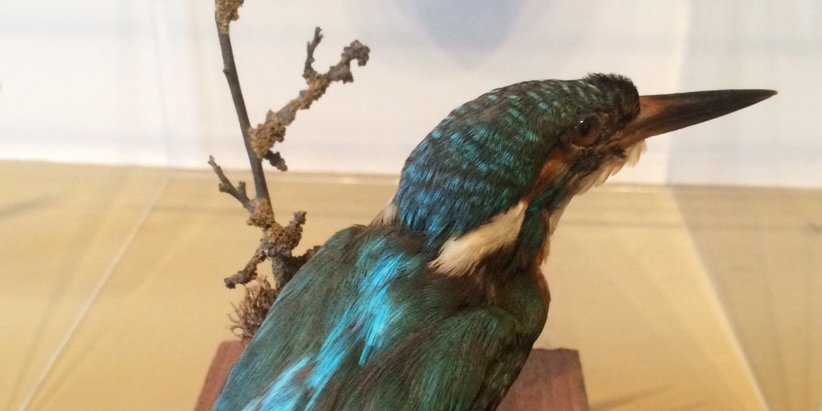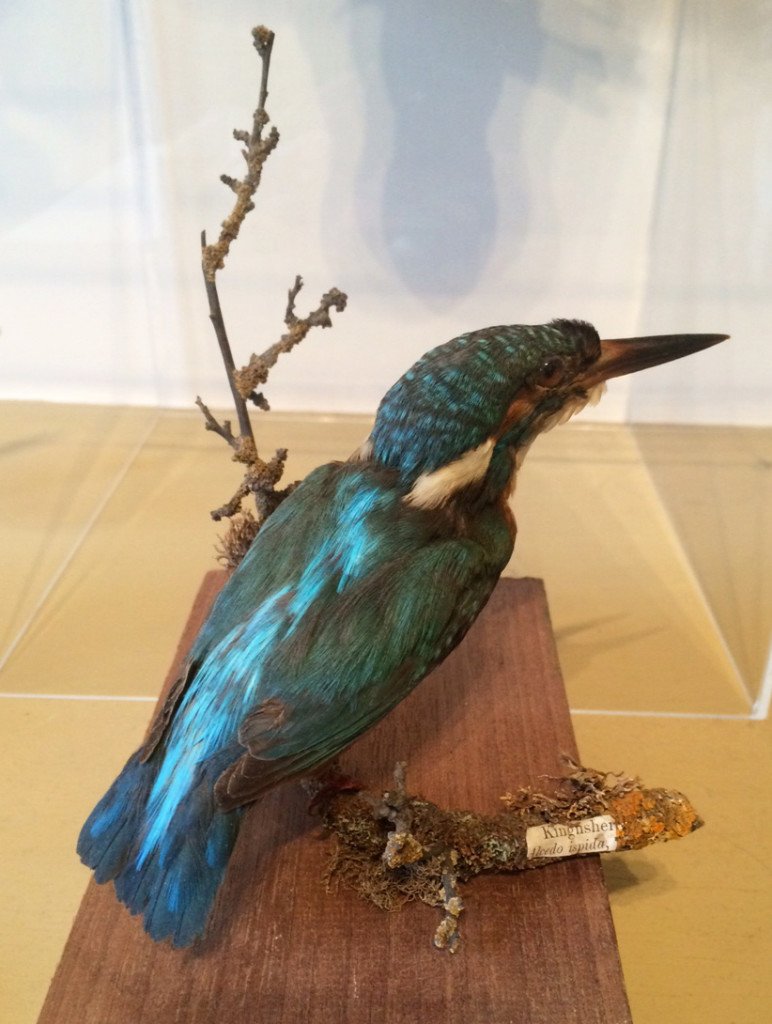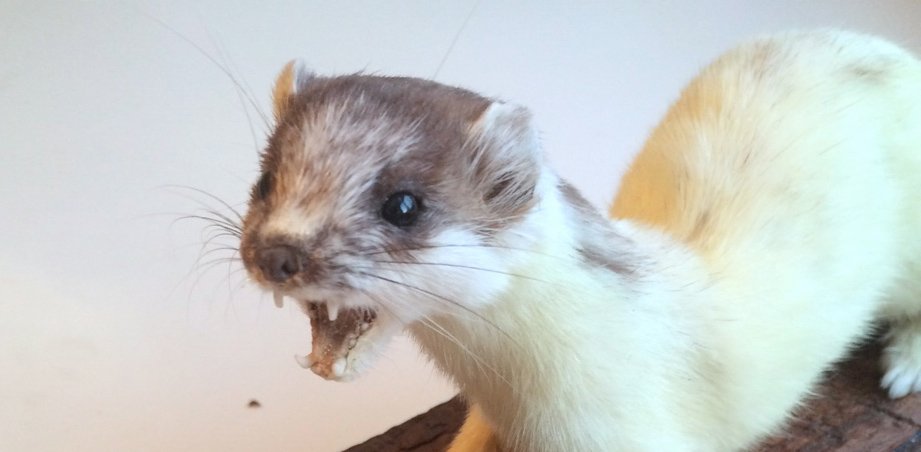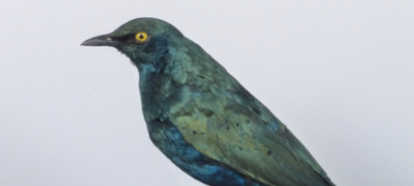
Common kingfisher
 Two weeks ago, I bought a common kingfisher with my pocket money. On the twig it’s sitting on, it says Alsedo ispida, which must have been its latin name at the time because now in latin the kingfisher is Alcedo atthis. It is the smallest bird that is not in my case. I think it’s in the best condition for its age. In Britain, we only have this type of kingfisher, the common or little blue, but their have been relatives of kingfishers, such as the bee-eaters that nested in Cumbria. Mine has a very large beak, and for its size it has the largest beak of all the birds on my shelves, with the only one with a bigger bill being the white-throated kingfisher, which is massive compared to the 17cm common. People say kingfishers aren’t blue, but I don’t believe it because they look really blue, because even though my taxidermy one was quite old, it still seems to have the blue on its back and the bright orange on its chest. In the wild, common kingfishers will eat small fish such as sticklebacks and will dive into the water at nearly 60mph, fly with the fish to a nearby perch and then thrash its spines. It will then throw it up and swallow it head first. Around the world, larger species of kingfisher, such as the pied and black-capped, will, as well as fish, take other animals including spiders, mice, rats, birds and even small reptiles. Common kingfishers don’t have many threats, infact the only one being the American mink. They’ll take the kingfisher’s chicks as they may not be fast enough to catch the adults. Kingfishers nest in mossy, muddy banks, but they are not out of the reach of minks.
Two weeks ago, I bought a common kingfisher with my pocket money. On the twig it’s sitting on, it says Alsedo ispida, which must have been its latin name at the time because now in latin the kingfisher is Alcedo atthis. It is the smallest bird that is not in my case. I think it’s in the best condition for its age. In Britain, we only have this type of kingfisher, the common or little blue, but their have been relatives of kingfishers, such as the bee-eaters that nested in Cumbria. Mine has a very large beak, and for its size it has the largest beak of all the birds on my shelves, with the only one with a bigger bill being the white-throated kingfisher, which is massive compared to the 17cm common. People say kingfishers aren’t blue, but I don’t believe it because they look really blue, because even though my taxidermy one was quite old, it still seems to have the blue on its back and the bright orange on its chest. In the wild, common kingfishers will eat small fish such as sticklebacks and will dive into the water at nearly 60mph, fly with the fish to a nearby perch and then thrash its spines. It will then throw it up and swallow it head first. Around the world, larger species of kingfisher, such as the pied and black-capped, will, as well as fish, take other animals including spiders, mice, rats, birds and even small reptiles. Common kingfishers don’t have many threats, infact the only one being the American mink. They’ll take the kingfisher’s chicks as they may not be fast enough to catch the adults. Kingfishers nest in mossy, muddy banks, but they are not out of the reach of minks.



